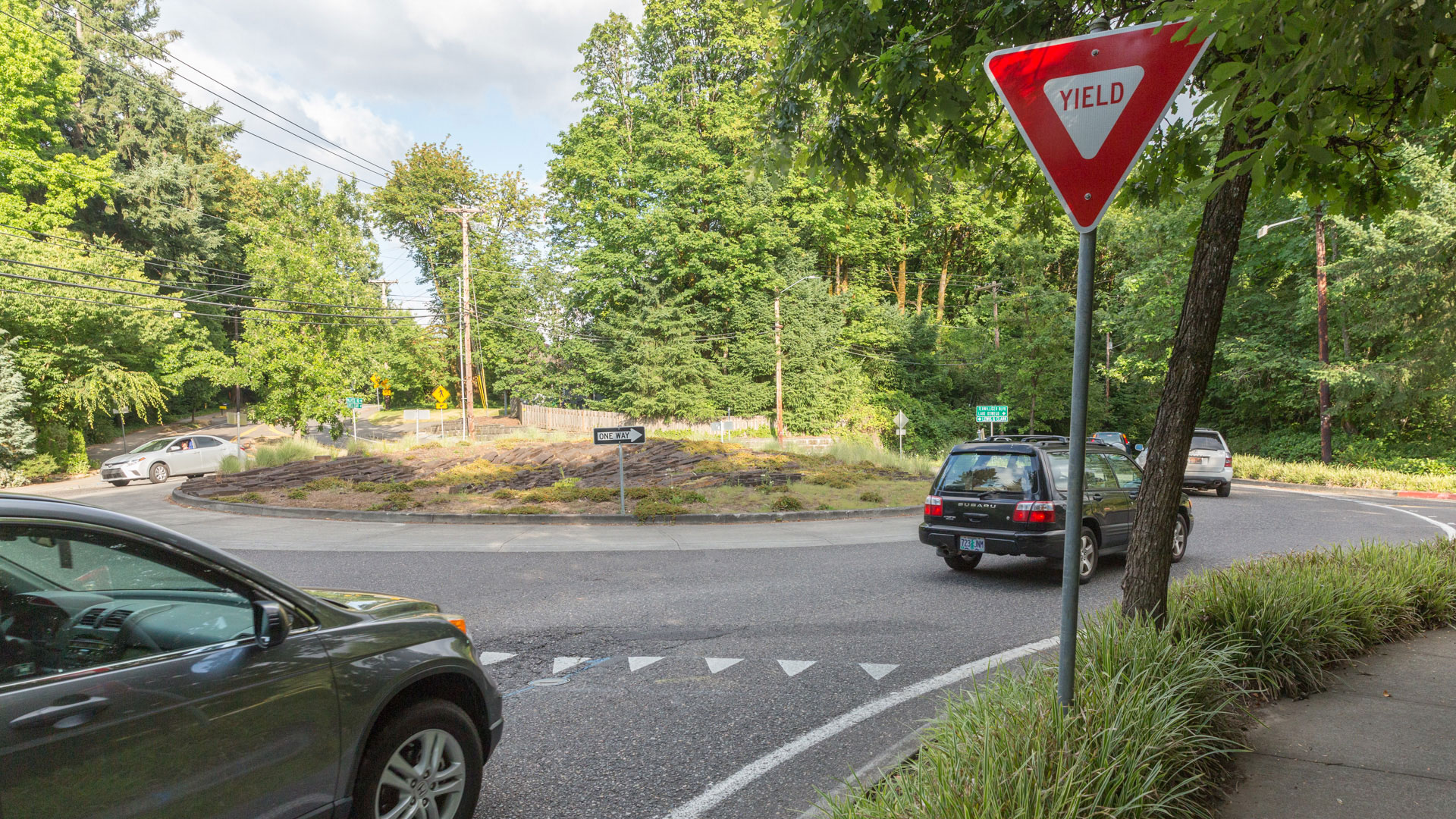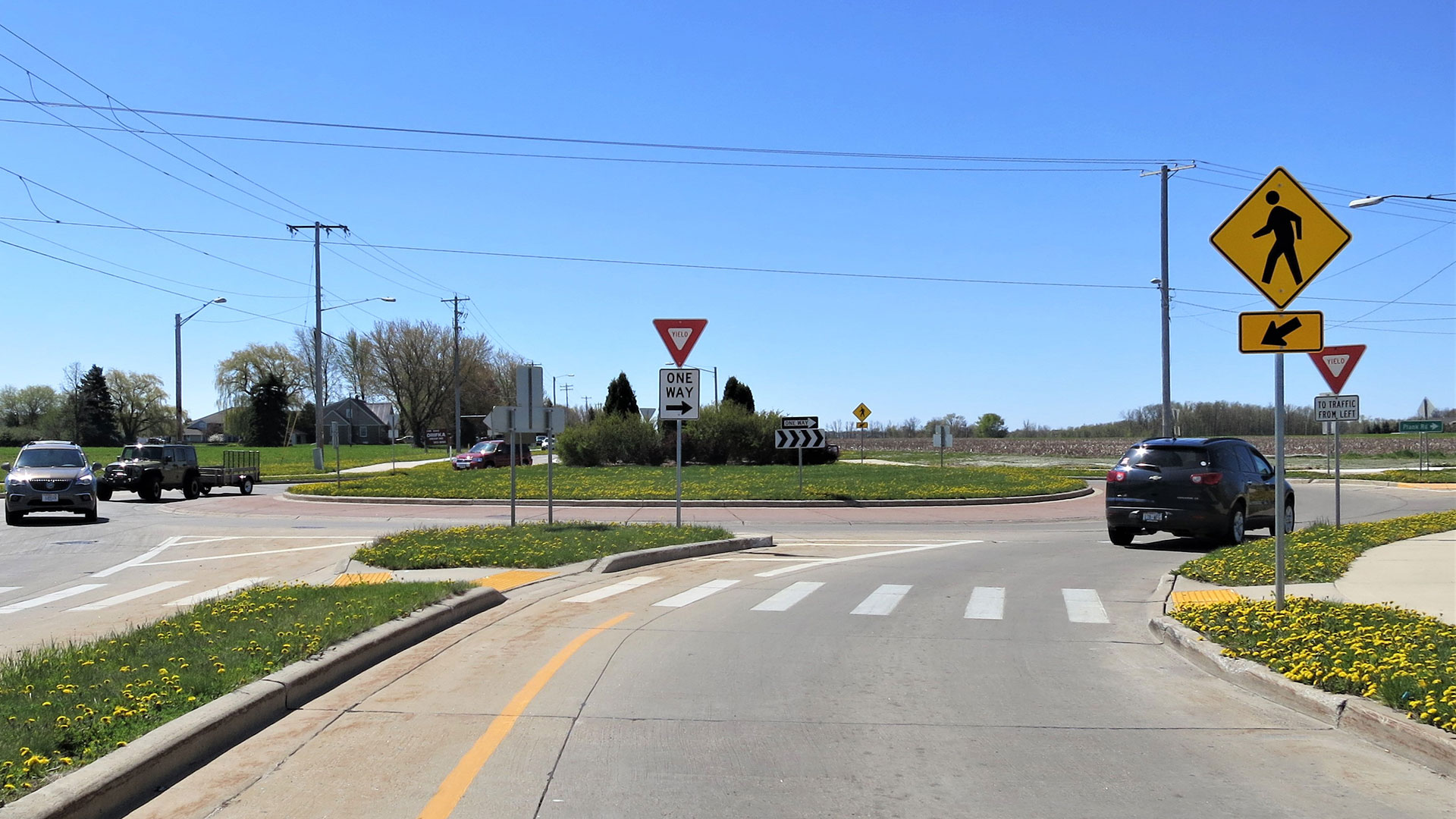August 30, 2024
Today, there are more than 10,000 roundabouts in the United States—but each community that has embraced this form of intersection has gone through the process of starting from zero. People tend to have opinions about roundabouts, and it’s often implementing the first one in a city or town that takes the most rigorous and thoughtful process.
FHWA has designated roundabouts as a Proven Safety Countermeasure for their remarkable safety and efficiency benefits. According to the Highway Safety Manual, converting a two-way stop control mechanism to a roundabout can reduce severe crashes by 82%, and converting a signalized intersection to a roundabout can reduce severe crashes by 78%. These safety benefits can primarily be attributed to lower speeds and reduced conflicts, which also improve conditions for people walking and bicycling. In short, the safety benefits of roundabouts are indisputable when it comes to minimizing the most severe crashes that put people in the hospital or worse.

The safety benefits of roundabouts are indisputable when it comes to minimizing severe crashes. Photo: Lee Rodegerdts.
Still, for people who aren’t used to navigating roundabouts, the concept of a roundabout can be intimidating. Usually the biggest obstacle is an unspoken fear of the unknown or a misconception built up by experiences with rotaries or older traffic circles that are different from the project being proposed. In other cases, the biggest obstacle can be internal to an agency, centered around an unwillingness to do something different than what has been done before, even when supporting evidence is there. Social media can also bring in misinformation and disinformation that requires effort to address.
When you’ve identified a location at which a roundabout would be the best choice for an intersection (which is a separate process that you can read about here), we have found that successfully bringing the roundabout to life requires a few key ingredients:
- Good planning and design. The latest national guide on roundabouts (downloadable for free) is a good source of information for all stages of roundabout planning and design. The Federal Highway Administration also has links to many resources, including videos, case studies, and technical reports.
- Political willpower. A political leader in support of the project is a powerful ally to navigate resistance and figure out how to make the project successful. However, if elected officials are on the fence, they’ll be more inclined to make decisions based on public sentiment—which is where the third piece comes in.
- Consensus-building. In this polarized era, the concept of consensus-building may seem like a quaint notion, but it really is necessary to create an environment where the broadest possible support can be achieved. Consensus-building requires a thoughtful approach, especially if it’s going to take public support to convince reluctant elected officials to move the project forward. Each project has proponents and opponents, and sometimes the opponents have an outsized voice. However, the goal is not for one group to win and another to lose; the goal of consensus-building is to come to a shared understanding and support of the project. This involves building a network of proponents to support the project, while also listening to opponents to determine their concerns and identify what can be done to address those concerns in a constructive manner. The goal is win-win whenever possible.

For people who aren’t used to navigating roundabouts, the concept of a roundabout can be intimidating. The goal of consensus-building is to come to a shared understanding and support of the project. Photo: Pete Jenior.
So, what are some practical ways to overcome the fear of the roundabout? Here are a few suggestions that we have found can work well:
1. While some communities have started with a multilane roundabout and have been successful, a single-lane roundabout is the easiest to design, build, and explain. They are also easiest for drivers to understand and navigate. Much of what we know about roundabout safety comes from studying single-lane roundabouts, which are arguably the safest form of intersection that we have. Safety results usually take time to materialize, given that crashes are usually rare events. However, when a single-lane roundabout is put in a location that has frequent close calls (“near-misses”) or other operational problems, the improvement could be noticeable in a short time by people who use the intersection often.
2. If there is a roundabout already in the ground in a nearby community, consider a field trip there. Telling people about roundabouts isn’t as effective as showing them pictures or video, and showing them isn’t nearly as effective as letting them experience it themselves behind the wheel, on a bike, on foot, or all of the above. If you don’t know where there might be examples near you, use the Roundabouts Database to find a nearby example that has similar conditions to the roundabout you’re proposing.
3. If a particular group continues to express concerns, we often recommend connecting them with peers in other communities that have roundabouts. This could take place in many ways: fire departments talking to other fire departments, school districts talking to other school districts, mayors talking to other mayors, or truck drivers talking to other truck drivers. Hearing from one’s own peers can often be the difference and be more meaningful than hearing it from the project team.
4. Try it out! Create a roundabout using temporary materials before permanently constructing it. This approach not only gives community members an opportunity to get comfortable with the design and experience its benefits, but it can also help refine design details based on turning paths. Build it at one-to-one scale in a parking lot to let skeptical truck drivers try it out, such as a “roundabout rodeo” as described here.
The Roundabout Rodeo: Example from Stayton, Oregon
Kittelson is working with the City of Stayton, Oregon to design their first roundabout. One of the early ways we engaged with the community to gather feedback and garner support was through a truck rodeo, which you can read about here.
For communities contemplating their first roundabout, a truck rodeo can be a unique and effective tool for building support and addressing the concerns of freight haulers, farmers, and other users. The event invites the community to come and test a full-size replica of the roundabout in a controlled environment. The project team “builds” the actual roundabout in a large parking lot using traffic cones, temporary chalk, and sandbags. A surveyor provides the layout so the roundabout shape and approach lanes are as precise as possible.
In Stayton, we reached out to the local fire department, county snowplow operators, industry (standard 18-wheeler, moving vans, and a tow truck), specialty users (for example, the hauling truck for a glulam beam manufacturing facility), and farm bureau to invite them to test it out. Each group had 30 minutes to use the roundabout and provide feedback. In addition to raising support and awareness for the design, the truck rodeo also led to valuable feedback that we used to make design adjustments so that the roundabout design could best suit the community’s needs. The roundabout design is now nearly complete.
Continue the Conversation
Do you have suggestions to add to this list? Or, do you represent a community that hasn’t yet embraced roundabouts? We invite you to reach out with your questions and ideas, and peruse more roundabout-related content through the links below:
What’s New in the New Roundabout Guide?
How Many Roundabouts Are in the United States?
